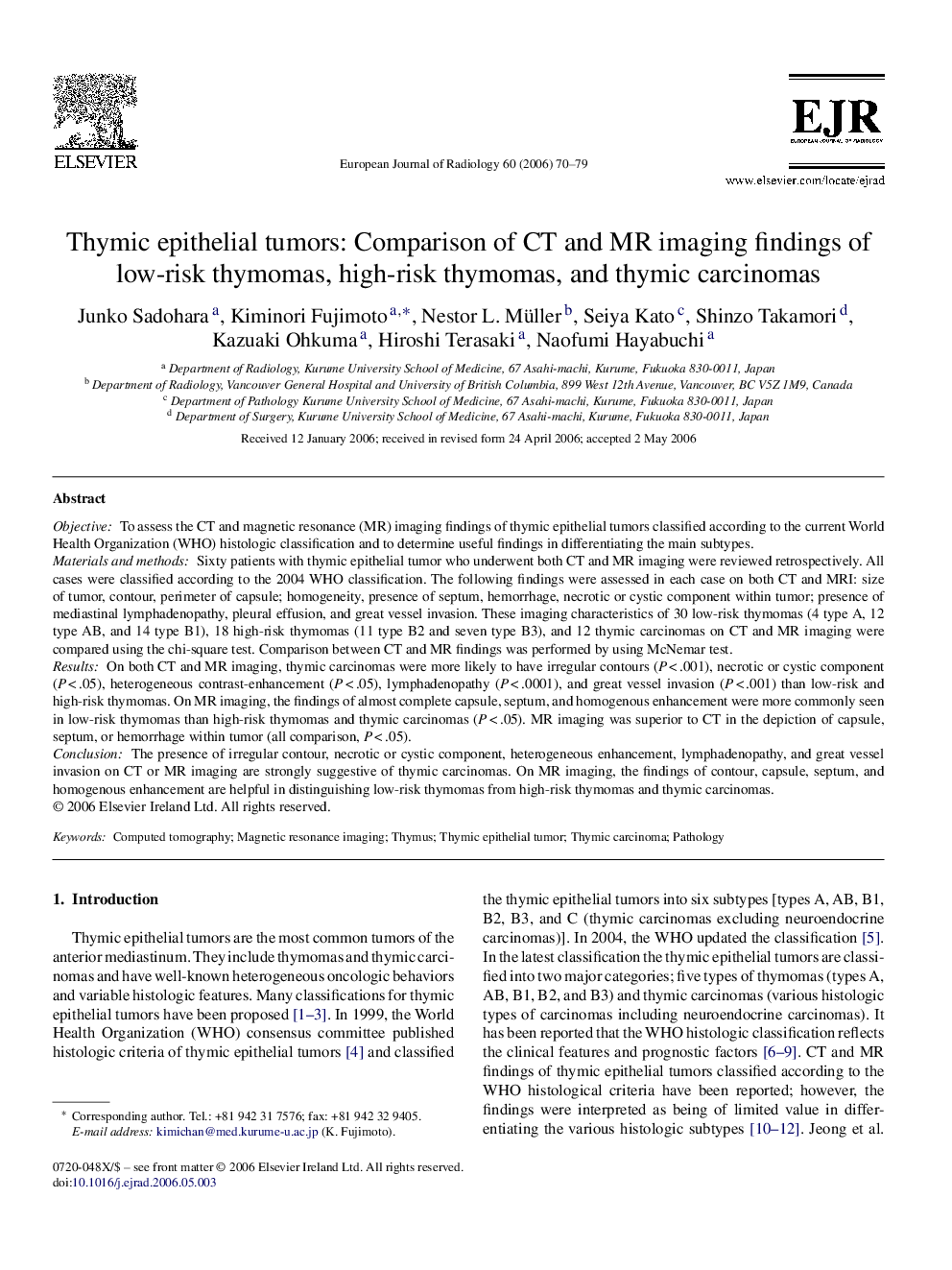| کد مقاله | کد نشریه | سال انتشار | مقاله انگلیسی | نسخه تمام متن |
|---|---|---|---|---|
| 4228530 | 1609860 | 2006 | 10 صفحه PDF | دانلود رایگان |

ObjectiveTo assess the CT and magnetic resonance (MR) imaging findings of thymic epithelial tumors classified according to the current World Health Organization (WHO) histologic classification and to determine useful findings in differentiating the main subtypes.Materials and methodsSixty patients with thymic epithelial tumor who underwent both CT and MR imaging were reviewed retrospectively. All cases were classified according to the 2004 WHO classification. The following findings were assessed in each case on both CT and MRI: size of tumor, contour, perimeter of capsule; homogeneity, presence of septum, hemorrhage, necrotic or cystic component within tumor; presence of mediastinal lymphadenopathy, pleural effusion, and great vessel invasion. These imaging characteristics of 30 low-risk thymomas (4 type A, 12 type AB, and 14 type B1), 18 high-risk thymomas (11 type B2 and seven type B3), and 12 thymic carcinomas on CT and MR imaging were compared using the chi-square test. Comparison between CT and MR findings was performed by using McNemar test.ResultsOn both CT and MR imaging, thymic carcinomas were more likely to have irregular contours (P < .001), necrotic or cystic component (P < .05), heterogeneous contrast-enhancement (P < .05), lymphadenopathy (P < .0001), and great vessel invasion (P < .001) than low-risk and high-risk thymomas. On MR imaging, the findings of almost complete capsule, septum, and homogenous enhancement were more commonly seen in low-risk thymomas than high-risk thymomas and thymic carcinomas (P < .05). MR imaging was superior to CT in the depiction of capsule, septum, or hemorrhage within tumor (all comparison, P < .05).ConclusionThe presence of irregular contour, necrotic or cystic component, heterogeneous enhancement, lymphadenopathy, and great vessel invasion on CT or MR imaging are strongly suggestive of thymic carcinomas. On MR imaging, the findings of contour, capsule, septum, and homogenous enhancement are helpful in distinguishing low-risk thymomas from high-risk thymomas and thymic carcinomas.
Journal: European Journal of Radiology - Volume 60, Issue 1, October 2006, Pages 70–79